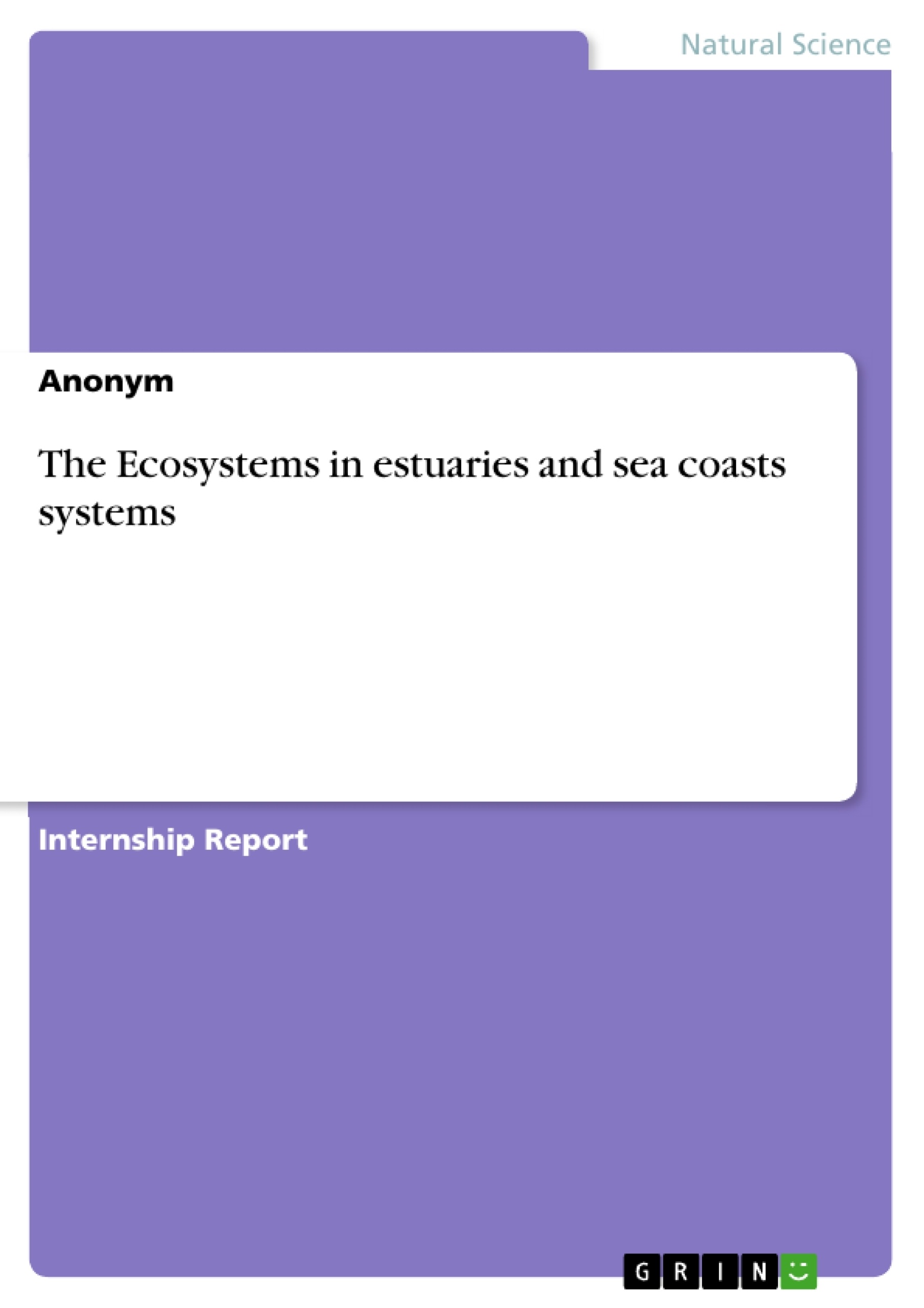The students from the Department of Biology Sciences (Marine Biology course) undertook an excursion to the Forth Estuary "Torry Bay" on 08thMarch, 2004. The students collected different samples from three investigation locations (Sandier flats, Mud flats and Torry Burn). On 22ndMarch, 2004 the collected samples of the excursion were examined at the laboratory of the University of Stirling.
Samples were collected by the water surface “puddles”, sediment water and sediment cores for later examinations in lab. The salinity was determined by the water surface and by the sediment water sample in place. In addition lugworm casts counted in square (1 m x 1m). The collected samples were analyzed in the lab; two weeks later about to estimate the ecosystem in estuaries and sea coasts, i.e. which roll they play in the flow of energy through the ecosystem and to determine in outline the distribution of organisms in relation to the environmental features. At last the GPS data was recorded to hold the geographical location were the samples were taken.
The area under investigation “The Firth of Forth” is located on the east coast of central Scotland. It is a complex estuarine site, stretching for over 100 km from the River Forth at Stirling eastwards past Edinburgh and along the coasts of Fife and East Lothian to a wide estuary mouth. A wide range of coastal and intertidal habitats is found within the site. Extensive mud-flats occur particularly in the Inner Firth, notably at Kinneil Kerse and Skinflats on the south shore and Torry Bay on the north shore. Typically, the flats support a rich invertebrate fauna, with EelgrassZosteraspp. growing on the main mud-flats, both features providing important food sources for the large numbers of migrating and wintering water birds that depend on the estuary. The Firth is of major importance for a rich assemblage of water birds in the migration periods and through the winter.
Inhaltsverzeichnis (Table of Contents)
- Introduction
- Material and Method
- Results
- Fauna from Torry Burn, South Alloa, Kincardine and S Queensferry
- Abundance, biomass and productivity of mean species from Torry Bay, South Alloa, Kincardine and S Queensferry
- Arenicola marina casts from Torry Bay
- Physical data of sediment in Torry Bay
- Flora
- Discussion
- Fauna from Torry Burn, South Alloa, Kincardine and S Queensferry
- Abundance, biomass and productivity of mean species from Torry Bay, South Alloa, Kincardine and S Queensferry
- Arenicola marina casts from Torry Bay
- Physical data of sediment in Torry Bay
- Flora
- Conclusion
- References
Zielsetzung und Themenschwerpunkte (Objectives and Key Themes)
This report examines the ecosystems found in estuaries and sea coasts, with a specific focus on Torry Bay in the Firth of Forth. The report outlines the methodology used for data collection and analysis, presents the findings of the investigation, and discusses the implications of these results for understanding the distribution and functioning of organisms within these ecosystems.
- The distribution and abundance of fauna in the estuary
- The impact of environmental factors on the ecosystem
- The role of intertidal habitats in supporting wildlife
- The importance of estuaries for migrating and wintering water birds
- The relationship between organism distribution and environmental features
Zusammenfassung der Kapitel (Chapter Summaries)
The introduction presents a brief overview of the Firth of Forth, highlighting its importance as a complex estuarine site with a diverse range of habitats and wildlife. This chapter also provides details about the field excursion undertaken by the students, outlining the methods used for data collection and the aims of the investigation.
The "Material and Method" chapter describes the specific procedures followed during both the field work and laboratory analysis. This includes a detailed explanation of the sampling techniques used and the formulas employed to calculate abundance, biomass, and productivity.
The "Results" chapter presents the findings of the investigation, encompassing data on fauna, abundance, biomass, productivity, and environmental factors. The chapter focuses on the distribution of organisms across different locations within the Firth of Forth.
Schlüsselwörter (Keywords)
This report focuses on the following key areas: estuarine ecosystems, sea coasts, Torry Bay, Firth of Forth, fauna distribution, abundance, biomass, productivity, environmental factors, intertidal habitats, water birds, and Zostera spp.
- Quote paper
- Anonym (Author), 2004, The Ecosystems in estuaries and sea coasts systems, Munich, GRIN Verlag, https://www.grin.com/document/54347



